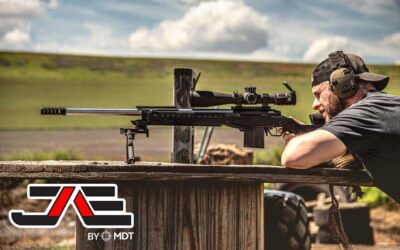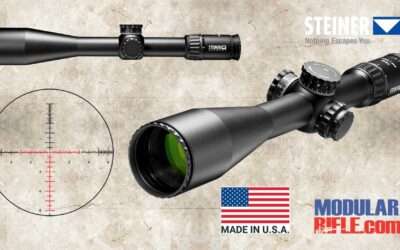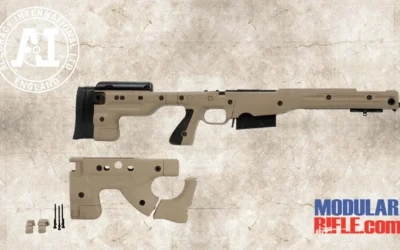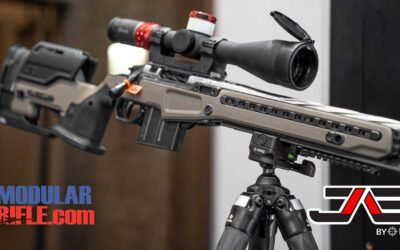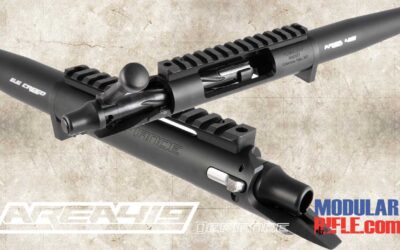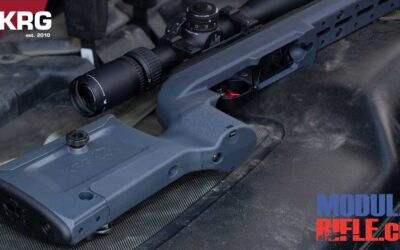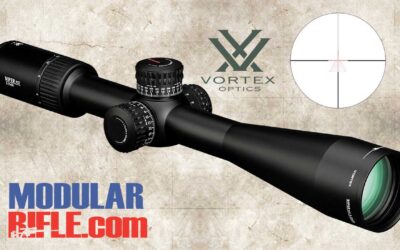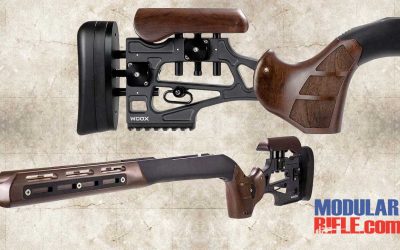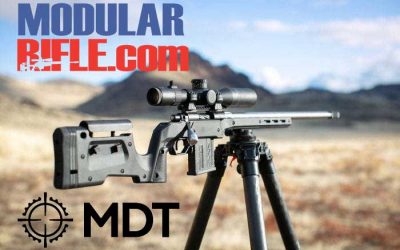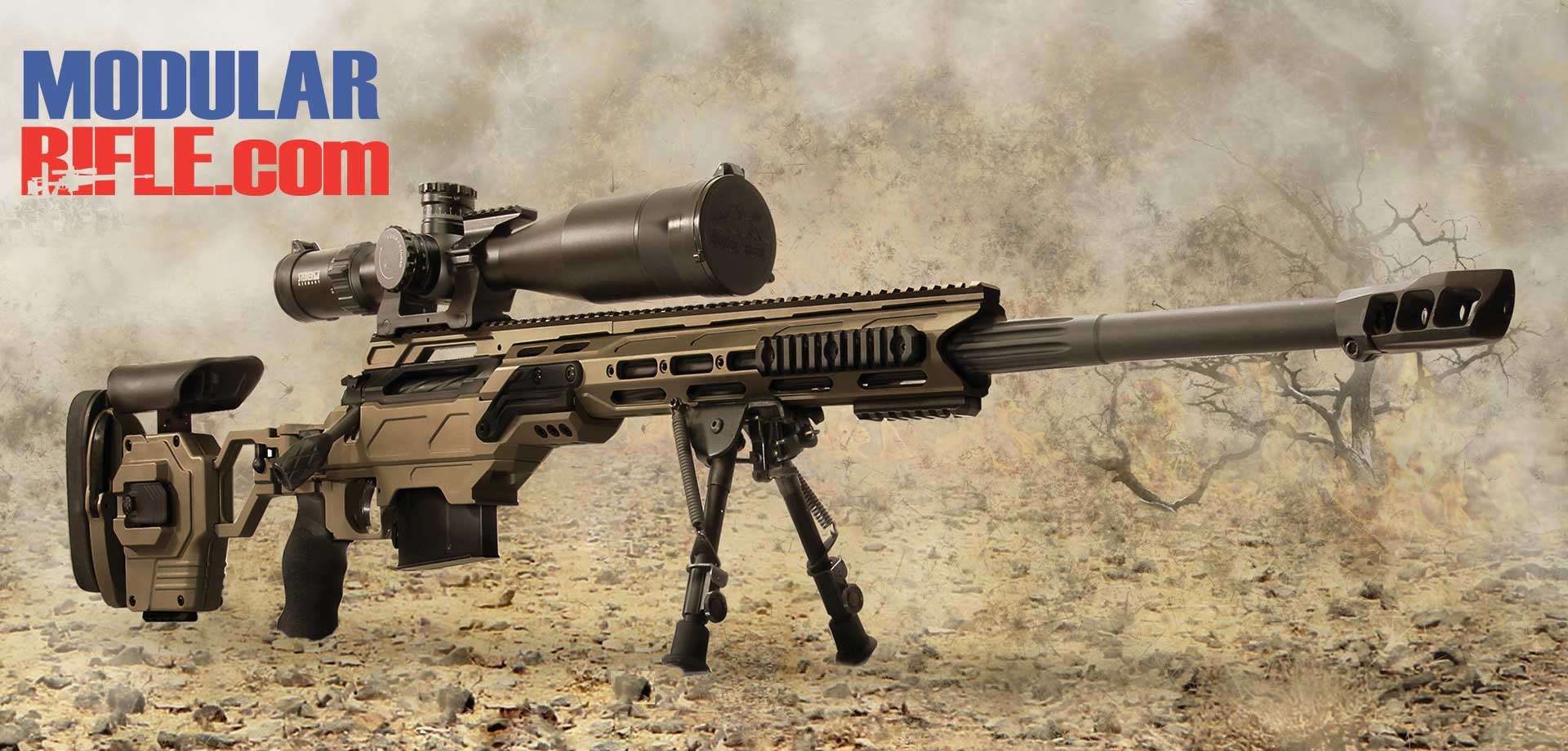
Precision Rifles & Precision Rifle Chassis Systems
Aero Precision Solus Short Action Receiver
The Aero Precision Solus Short Action Receiver is the keystone in an ecosystem that provides shooters with an open-source, user-configurable, and quality-manufactured foundation for their precision bolt action build. Compatible with industry-standard pre-fits and drop-in components, the Solus removes many barriers to entry often associated with custom rifle builds, allowing the shooter to build a system that is specific to their needs. When manufacturing a custom bolt action, quality and consistency are essential. To ensure the most precise tolerances are held, each Solus Action is inspected by CMM (coordinate measuring machine) in their state-of-the-art manufacturing facility.
MDT JAE-700 G4 Chassis Coming Soon
MDT, the new owners of the JAE Chassis brand, announced the newly redesigned JAE chassis. The “JAE-700 G4” Remington Model 700 chassis will be available for preorder in the next couple of weeks.
Defiance Machine Deviant Elite Rifle Action
The Defiance Machine Deviant Elite Rifle Action sets the bar for custom rifle actions. Integral scope mounts and recoil lugs, combined with Defiance’s quality standards, leave little to be desired when building your dream rifle. Choose from one of the five different styles to custom tailor the action to your needs.
Chris Kyle .300 Win Mag
Chris Kyle .300 Win Mag Below is an excerpt from the Chris Kyle autobiography "American Sniper" available from Amazon The .300 is in another class entirely. As I’m sure many readers know, .300 Win Mag (pronounced “three hundred win mag”) refers to the bullet the rifle...
Steiner T5XI 5-25x56mm Riflescope 5122
The Steiner T5xi 5-25x56mm tactical riflescope with SCR reticle is designed for long-range precision. This riflescope is ideal for long-range precision bolt guns like a .300 Winchester Magnum or .338 Lapua.
Accuracy International AICS AT Remington 700 Chassis
The AICS AT chassis from Accuracy International is a polymer and alloy chassis (not merely a stock), which provides the rigidity, strength, and durability necessary to provide a stable, rugged platform for the barreled action in all weather and any terrain.
JAE Remington 700 Chassis Pictures Shot Show 2022
Check out our MDT JAE Remington 700 chassis pictures from Shot Show 2022. Look for the JAE 700 to be available sometime in 2022.
Area 419 Defiance Tenacity Barreled Action
Area 419 Tenacity Barreled Action features a receiver that’s nitride-treated for hardness, low friction, and durability, and the receivers are matched with cut-rifled Bartlein 5R barrels. The barrels are guaranteed to provide accuracy of 1/2 MOA or less in the hands of a skilled shooter using quality ammunition.
KRG Bravo 10/22 Chassis
Introducing the KRG Bravo 10/22 Chassis. Designed to fit your favorite Ruger 10/22 for that dream build you’ve always wanted. Featuring the same great ergonomics as the standard Bravo but with a slightly shorter minimal LOP (11.25″) for shooters of all sizes. For those of you over-thinkers out there, don’t worry, the cheekpiece position is still the same as our standard Bravo. The Bravo is one of the most comfortable stocks available but that’s just the beginning. The full-length stiff aluminum backbone will not allow the forend to flex on you but does allow design modularity with loads of accessories like our popular Spigot Mount and ARCA Rail system.
Vortex Viper PST Riflescope, 5-25x50mm Gen II FFP Illuminated EBR 7C MRAD
The Vortex Viper PST Riflescope, 5-25x50mm, Gen II, First Focal Plane, Illuminated EBR 7C MRAD, Black, PST-5259 hands an unfair advantage to shooters who seek to keep the upper hand in every situation from close quarters to long-range shots. The illumination dial is cleanly integrated into the side focus adjustment knob for easy access and streamlined performance. The glass-etched reticle offers shooters highly functional, intuitive, and detailed hold points, yet remain uncluttered for optimal viewing and feature 10 intensity levels with off positions between each setting.
TriggerTech Diamond Trigger
The TriggerTech Diamond Trigger is the most common Remington 700 trigger in use by precision rifle shooters. In fact, more competitive shooters use the Diamond Trigger than all other triggers combined.
Woox Furiosa Chassis
WOOX Furiosa Chassis is a ground-breaking, practical aftermarket replacement for some of the major manufacturer’s OEM rifle stocks. Manufactured from only the highest quality parts, materials and techniques, the Furiosa Chassis feels at home both on the range and in the great outdoors. The Furiosa pairs a full-length aerospace braided aluminum skeleton to high-quality wooden front and rear stocks. It is both fully adjustable and customizable.
Furiosa chassis is manufactured from only the highest-quality parts, materials and using the latest technologies. Furiosa pairs a full-length aerospace braided aluminum skeleton to high-quality wooden front and rear stocks. The rear stock features an adjustable cheek rest and LOP adjustable to ¾” or 2 cm and integrated flush cups. The front stock offers MLOK rails for further customization. An intuitive construction makes disassembly and maintenance quick and easy.
MDT XRS Chassis System for Rifles
The MDT XRS Chassis is the most advanced and configurable crossover stock on the market and is the ideal performance upgrade for any factory rifle or foundation for a custom rifle build. Weighing in at 3.9lbs (depending on the inlet), the XRS is ideal for both hunting or target rifles. The XRS features an adjustable length of pull via spacers from 13.25” to 15+” and a quick-adjust cheek piece to adjust for scope height overbore. The XRS accepts standard AICS pattern magazines and has an easy to manipulate ambidextrous magazine latch. The generous 12” long Forend comes with M-LOK slots built in for accessory mounting and attachment of ARCA or Picatinny rails.
Today we are on the precipice of great changes to the bolt action rifle.. Almost weekly some rifle chassis manufacturer or traditional firearm manufacturer announces a new rifle chassis system or a complete rifle built upon a chassis. The chassis eliminates the wood stock formerly used in bolt action rifles. The chassis in many ways are making bolt action rifles more AR-15 or AR-10 like. In fact many rifle chassis utilize AR stocks, pistol grips, scope mounts and any other picatinney rail mounted hardware you can imagine.
The changes do not end theres. Taking a play from Savage some clever folks are adapting Savage drop-in barrels to Remington 700 receivers. This method is called “Remage”. There are currently 3rd party Remington 700 action clones designed for Savage barrels. Not to be beaten at it’s own game several of Remington sniper rifles such as the PSR, MSR and CSR feature quick change barrels that look similar to that of an AR-15. It’s a matter of time before a modular quick change barrel system like that makes it to consumer rifles. We are seeing bolts that feature the best locking methods of all firearms combined in to bolts. These new rifle chassis are also in some cases allowing users to choose the type of magazine whether AR-15, AR 308 or AICS.
The future is also here with ammunition. Despite an emotional debate of purists in love with the .308 Winchester and it’s long proven history 6.5 Creedmoor is poised to be the long range accuracy cartridge king. If the military adopts 6.5 Creedmoor and brings the ammo cost down that will be a game changing moment for shooters and snipers alike.
The purpose of this site is to keep up with these changes for a future, current and historical perspective.

